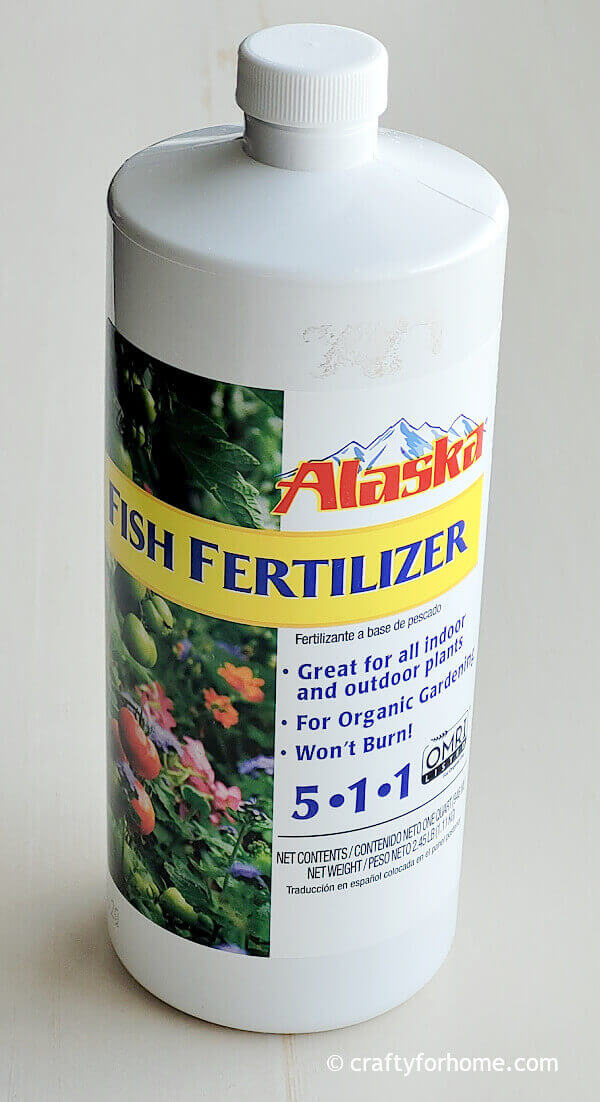

In a separate experiment conducted in 2011, marine extracts were applied as foliar treatments. From 2009 to 2011, Syrah grape vines at the Trestle Vineyard on the California Polytechnic State University, San Luis Obispo campus received individual doses of marine extract via fertigation at berry set and veraison proportional to the amount they would receive on an annual per-acre basis based on the extract manufacturer’s recommended rate of application. The goal of this study was to determine whether exogenous applications of marine extracts on Syrah grapes can influence yield components, harvest juice quality parameters, and nutrient uptake. Vineyard management practices have an impact on grape berry development in ways that influence the quality of wine made from those grapes.
#FISH EMULSION FREE#
Therefore, oospores and chlamydospores when existing as free propagules in soil appear unlikely to be involved in the long-term survival of P. cinnamomi oospores may be entirely lost within 1 year and that of chlamydospores within 3 months for the soil type tested. Based on the MTT staining, this study indicated that viability of P. cinnamomi up to week 12 for moist soil and week 3 for dry soil, but thereafter failed to detect RNA even though viable oospores could be detected by MTT staining. The RNA-based qPCR assay indicated a strong presence of viable oospores of P. There was no significant difference between untreated soil and the exogenous treatments. Reduction in viability of chlamydospores was more rapid than oospores, with viability declining from 92% to zero after 12 weeks. The mean percentage viability for oospores decreased from 91% at time zero to 72, 35, 20 and 1% after 6, 12, 24 and 48 weeks, respectively. Over 96% of oospores lost viability over a period of 48 weeks irrespective of soil moisture conditions. Spore viability was determined by the thiazolyl blue tetrazolium bromide (MTT) staining technique, with a qPCR assay used to compare general patterns of decline. The exogenous treatments were applied under moist and dry soil conditions. cinnamomi when present as free propagules in untreated soil, or in soil subject to four exogenous treatments: smoke water, fish emulsion and two fungicides (ridomil and furalaxyl). This study investigated the survival of viable oospores and chlamydospores of P. The mode of persistence of Phytophthora cinnamomi, a highly aggressive soil- and water-borne pathogen, remains unclear. The results indicated that fish emulsion was not effective in soils with high disease pressure. The reduction of scab or verticillium wilt by fish emulsion was not soil-specific and varied from year to year. No effect of fish emulsion on scab and verticillium wilt or tuber yield was observed in a 2005 field trial. Total tuber yield was reduced at one site and not affected at the other. In potato field trials at two sites in 2004, treatment with 1% fish emulsion (20 000 L/ha) significantly (P < 0.05) reduced scab severity (by 0.8–1 units) and significantly increased scab-free tubers (by 132%–366%) and marketable-tuber (surface scab < 5%) yield (by two fold), compared with the control treatments. Fish emulsion also reduced potato petiole infection by V. Microplot experiments with potato showed that the 1% fish-emulsion treatment significantly (P < 0.05) reduced scab severity (by 0.6–2.1 units on a scale of 0–6) in seven soils with low to moderate scab-disease pressure and significantly increased total tuber yield (by 41%–170%) in nine soils, compared with the control treatments.

The amendment of soil with fish emulsion at rates of 0.5% and 1% (m/m) protected eggplant from verticillium wilt, and the 1% fish-emulsion treatment increased fresh and dry plant biomasses in the greenhouse.

Tests were conducted on 11 soils with different characteristics (pH, 5.2–7.2 organic-matter content, 1.0%–3.7%), originating from commercial potato fields in Ontario, New Brunswick, and Prince Edward Island with a history of verticillium wilt and scab. In the present study, fish emulsion was tested as a preplanting soil amendment to control soilborne diseases of eggplant and potato such as verticillium wilt and scab. Fish emulsion is used mainly as a fertilizer for crop production but, in a previous study, we have demonstrated its efficacy in suppressing damping-off in radish and cucumber in a peat-based substrate or soil.


 0 kommentar(er)
0 kommentar(er)
